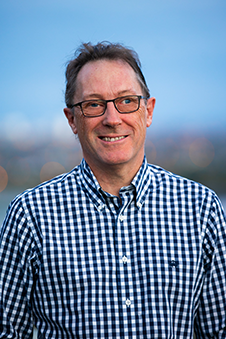
Regaining adequate physician staffing levels to deliver accessible, high-quality care should be a priority says Otago’s Professor Les Toop.
New Zealand’s general practice workforce is under-resourced, under-valued, poorly distributed and increasingly burnt out, three senior doctors say.
In an editorial in this week’s New Zealand Medical Journal, Professor Les Toop, a Specialist General Practitioner and Professor of General Practice Emeritus, University of Otago, Christchurch; Dr Jo Scott-Jones, a Specialist General Practitioner and Clinical Director at Pinnacle Midlands Health Network; and Dr Bryan Betty, a Specialist General Practitioner and Chair of General Practice New Zealand, say there is “clearly a problem”.
The group says the “increasing complexity of care, unsolicited work resulting from a lack of capacity elsewhere in the system, a funding formula no longer fit for purpose and workforce shortages represent a perfect storm”.

Professor Les Toop, Specialist General Practitioner and Professor of General Practice Emeritus, University of Otago, Christchurch
The situation was predictable and repeatedly predicted years ago, Professor Toop says.
“The system has not delivered equitable outcomes to sectors of the Aotearoa New Zealand community, especially for Māori and Pasifika communities, the system is not providing population health outcomes that meet expectations and the system is not providing its workforce with working conditions that are attractive or sustainable,” Professor Toop says.
Investment by successive governments has failed to provide and maintain adequate facilities, nor to train the workforce needed to service rapid population growth and the associated demand.
Part of the answer lies in regaining adequate staffing levels, he says.
“The makeup of the workforce must also better reflect Aotearoa New Zealand society, and it must have the capacity, capability and connection to deliver accessible, high-quality care in partnership with communities and the wider health and social care systems.
“While there are encouraging examples of great teamwork throughout the country, there are many systemwide changes that will be necessary to turn the ship around and achieve this worthy goal across the motu,” Professor Toop says.
Dr Scott-Jones says a recent Commonwealth survey shows younger GPs have the highest rate of burnout.
“We know that the proportion of GPs is falling in the Aotearoa New Zealand workforce and not nearly enough young doctors are choosing a career specialising in general practice.
“The effect of this mismatch is that a growing and ageing population is being cared for by an ageing diminishing dispirited health workforce, large numbers of whom are contemplating relocation or retirement at or before retirement age, citing stress, burnout and feeling unsupported,” he says.
The traditional model of 15-minutes consultations is also no longer suitable as patient cases become more complex.
“GPs are seeing a growing number of patients suffering multi-morbidity, taking multiple medications, many with additional social problems linked to ageing, living alone and experiencing economic hardship.
“In addition to this, general practice has long been seen and used by other parts of the health system as the universal backstop with assumed uncapped ability to mop up lack of capacity elsewhere. This is no longer possible and consequently emergency departments are increasingly required to manage chronic conditions or the consequences of inadequately managed long-term problems,” Dr Scott-Jones says.
A funding and business model that allows sufficient time for physicians to carry out their work should be a priority for government, as should creating a framework though which high quality sustainable general practice can deliver to all New Zealanders and address long standing inequitable health outcomes, he says.
“The public of Aotearoa New Zealand and the health workforce deserve better.”